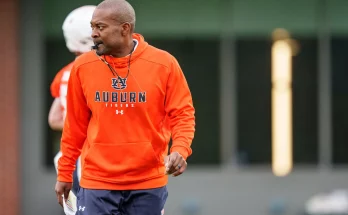Governor JB Pritzker Firmly Opposes Public Funding for Chicago Bears’ Proposed New Stadium
Governor JB Pritzker has publicly and unequivocally voiced his opposition to the use of public funds to support the construction of a new stadium for the Chicago Bears, intensifying an ongoing debate about the role of taxpayer money in financing professional sports facilities. This stance, announced on Monday, reflects growing skepticism among political leaders and the general public about the economic and social justification for using government resources to subsidize private sports franchises, especially at a time when cities and states face significant budgetary pressures and urgent demands for investment in essential public services.
The Chicago Bears, one of the most iconic franchises in the National Football League (NFL), have been exploring options for a new stadium to replace Soldier Field, their historic home for more than four decades. While the prospect of a state-of-the-art venue excites fans and promises to elevate the team’s profile and revenue potential, it also raises critical questions about how such an ambitious project should be financed. Historically, stadium projects across the country have often relied heavily on public funds, whether through direct appropriations, bonds backed by taxpayer revenue, or infrastructure improvements paid for by city or state governments. However, mounting evidence and economic analysis increasingly challenge the notion that these investments yield a net benefit for the communities footing the bill.
Governor Pritzker’s opposition comes at a time when Illinois and Chicago are grappling with numerous pressing needs, including improving public education, expanding affordable housing, repairing aging infrastructure, and enhancing public safety. Many advocates argue that the millions, and potentially billions, of dollars proposed for a new Bears stadium would be better spent addressing these critical priorities that have a more direct and measurable impact on residents’ quality of life. The governor’s position highlights a shift in political leadership’s approach to public funding of sports facilities, signaling a demand for more accountability and fiscal prudence in how taxpayer dollars are allocated.
Moreover, Governor Pritzker’s stance resonates with a broader national conversation about the fairness and transparency of stadium financing deals. Across the United States, public funding for stadiums has frequently been criticized for disproportionately benefiting wealthy team owners and investors while offering limited returns to the taxpayers who ultimately shoulder the financial risk. Several studies have shown that promised economic boosts such as increased tourism, job creation, and local business growth often fall short of projections, leaving communities with expensive, underutilized venues and strained budgets.
In Illinois, the debate is especially poignant given the state’s history of contentious stadium deals and public financing controversies. Past projects have sometimes led to public backlash when citizens felt excluded from the decision-making process or when economic benefits failed to materialize as expected. Governor Pritzker’s clear opposition is a signal that future projects will be scrutinized more intensely and that alternative funding mechanisms, perhaps relying more heavily on private investment or creative partnerships, will be sought to ensure that the public interest remains paramount.
The governor’s remarks also reflect a recognition of changing attitudes among sports fans and taxpayers. While the cultural significance of teams like the Chicago Bears cannot be understated, public willingness to subsidize sports facilities is waning, especially in an era where entertainment options abound and economic challenges persist. Voters increasingly demand that government leaders prioritize investments that produce tangible, equitable benefits rather than subsidizing projects perceived as corporate handouts.
In response to the governor’s opposition, the Bears organization and their supporters may face heightened pressure to revise their financing strategy for the proposed stadium. This could include increasing private contributions, seeking naming rights deals, or exploring partnerships with corporate sponsors to lessen or eliminate the need for taxpayer involvement. The Bears’ management will also need to engage in meaningful dialogue with community leaders, advocacy groups, and the public to build support and address concerns about the project’s social and economic impact.
Governor Pritzker’s position aligns with a growing number of state and municipal leaders who have recently taken similar stands against public funding of sports stadiums. This emerging consensus underscores a fundamental shift in how public resources are allocated in relation to professional sports. Rather than automatic assumptions that taxpayer money should support stadium construction, governments are demanding greater evidence of public benefit and exploring innovative approaches that reduce financial risks to the public sector.
Critics of Pritzker’s opposition may argue that new stadiums can revitalize neighborhoods, generate jobs, and increase tourism revenues, contributing to local economies. Proponents also point to the intangible value of civic pride and cultural identity associated with a beloved sports team playing in a modern facility. However, such arguments must be balanced against rigorous economic analyses and the competing needs of communities struggling to fund essential services such as schools, healthcare, transportation, and public safety.
In Illinois, where budget deficits and economic inequality persist, Governor Pritzker’s message reflects a pragmatic approach to fiscal stewardship and social responsibility. By opposing the use of public funds for the Bears’ stadium, he is advocating for policies that prioritize investments in the broader public good and ensure that taxpayer dollars are spent in ways that deliver measurable improvements in residents’ lives.
The debate over public funding for the Chicago Bears’ new stadium is emblematic of larger questions about the role of government in supporting professional sports and the values that guide public spending decisions. Governor JB Pritzker’s opposition to subsidizing the stadium project with taxpayer money sends a clear message that these questions must be answered with transparency, accountability, and a commitment to serving the interests of all Illinoisans.
As discussions continue, it will be critical for stakeholders—including elected officials, the Bears organization, community groups, and the public—to engage in open, fact-based conversations about the costs and benefits of stadium proposals. Only through such dialogue can Illinois ensure that any future investments in sports infrastructure are aligned with the state’s economic realities, social priorities, and long-term vision for equitable growth and prosperity.
Governor Pritzker’s leadership on this issue sets a precedent for how Illinois approaches public-private partnerships in the future and underscores the importance of thoughtful governance that places the needs of citizens above the interests of private enterprise. His stance is a call to rethink traditional funding models and to explore innovative, sustainable alternatives that protect public resources while fostering vibrant, inclusive communities.
In sum, Governor JB Pritzker’s firm opposition to using public funds for the Chicago Bears’ new stadium project highlights a pivotal moment in Illinois’ approach to economic development and public spending. It reflects broader national trends questioning the wisdom of stadium subsidies, advocates for greater fiscal responsibility, and champions investment in public goods that benefit all residents. As the Bears and other stakeholders navigate the complexities of stadium financing, Pritzker’s position will undoubtedly shape the contours of this debate and influence the future of sports infrastructure in Chicago and beyond.



